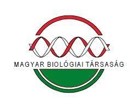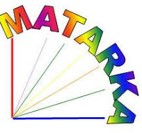Conditions for aerial counting of snake's head fritillary (Fritillaria meleagris L.) flowering individuals
Abstract
The conservation status of snake’s head fritillary (Fritillaria meleagris L.) justifies the monitoring of the abundance of flowering plants. The species’ short detection period and its occurrence in extensive meadows make it difficult to determine the number of flowering individuals through ground survey. While the time and cost requirements of previously available methods did not allow for a complete annual data collection, aerial
surveys can provide a cost-effective alternative to estimating the current number of flowering individuals in a population. This modern method also has physical limitations: the geometric accuracy of the orthophoto mosaics must be kept below 10 cm, the images must be taken with a high overlap (80% line and 95% inline overlap), and the spatial resolution must be designed to be around 0.7 mm.
References
'100/2012 (IX.28.) VM rendelet: „A védett és a fokozottan védett növény- és állatfajokról, a fokozottan védett barlangok köréről, valamint az Európai Közösségben természetvédelmi szempontból jelentős növény és állatfajok közzétételéről szóló 13/2001. (V. 9.) KöM rendelet és a növényvédelmi tevékenységről szóló 43/2010. (IV.23.) FVM rendelet módosításáról.” Magyar Közlöny 128: 20903–21019.
Bakó G., Molnár Zs., Bakk L., Horváth F., Fehér L., Ábrám Ö., Morvai E., Biró Cs., Pápay G., Fűrész A., Penksza K., Pácsonyi D., Demény K., Juhász E., Dékány D., Csernyava L., Illés G., Molnár A. 2021: Toward a High Spatial Resolution Aerial Monitoring Network for Nature Conservation – How Can Remote Sensing Help Protect Natural Areas? Sustainability 13(16): 8807. https://doi.org/10.3390/su13168807
Biró É., Simon Zs., Bódis J. 2018: A kockásliliom (Fritillaria meleagris L.) tüskeszentpéteri (Zalaszentgrót) élőhelyének tájhasználat története. Kitaibelia 23(1): 25–30. https://doi.org/10.17542/kit.23.25
Bódis J., Takács A., Óvári M., Virók V., Kulcsár L., Magos G., Sulyok J., Nótári K., Molnár A., Barna Cs., Kuczkó A., Biró É., Gerencsér B., Freytag Cs., Tüdősné Budai J., Molnár V. A. 2020: Az év vadvirága 2016-ban: a mocsári kockásliliom (Fritillaria meleagris). Kitaibelia 25(1): 79–100. https://doi.org/10.17542/kit.25.79
Búzás E., Bódis J., Fülöp B., Pacsai B. 2022: Citizen science survey of the snake’s head fritillary (Fritillaria meleagris) in the valley of the River Zala in Hungary. Georgikon for Agriculture 26(3): 2–13.
Búzás E., Fülöp B., Pacsai B., Bódis J. 2024: Mocsári kockásliliom felmérés az Alsó-Zalavölgyben. In: Csecserits A., Somodi I. (szerk.): XIV. Aktuális Flóra- és Vegetációkutatás a Kárpát-medencében nemzetközi konferencia: Összefoglalók. HUN_REN Ökológiai Kutatóközpont, Budapest, p. 13.
Király G. (szerk.) 2007: Vörös Lista. A magyarországi edényes flóra veszélyeztetett fajai. Saját kiadás, Sopron, 73 pp.
Király G. (szerk.) 2009: Új magyar füvészkönyv. Magyarország hajtásos növényei. Határozókulcsok. Aggteleki Nemzeti Park Igazgatóság, Jósvafő, 616 pp.
Reckling W., Mitasova H., Wegmann K., Kauffman G., Reid R. 2021: Efficient Drone-Based Rare Plant Monitoring Using a Species Distribution Model and AI-Based Object Detection. Drones 5(4): 110. https://doi.org/10.3390/drones5040110
Tatarenko I., Walker K., Dyson M. 2022: Biological Flora of Britain and Ireland: Fritillaria meleagris. Journal of Ecology 110: 1704–1726. https://doi.org/10.1111/1365-2745.13886


















